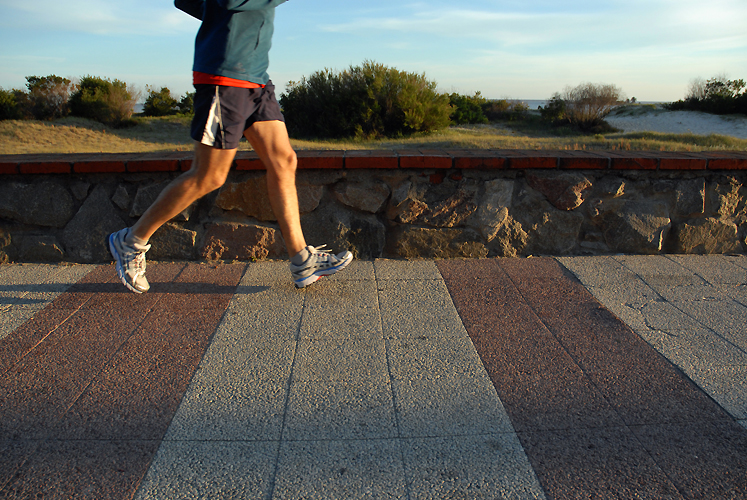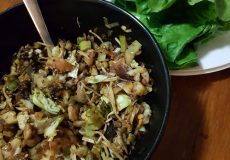Bone and Joint Health
Bone and Joint Health
Do you experience swollen and painful joints? Do your knees, hips and knuckles feel like they are on fire? Are you finding it harder to be active and agile? These complaints are common symptoms of arthritis.
The word arthritis, when translated from the Greek words, arthron and itis, simply means “joint inflammation”. There are many different types of arthritis, the most common being osteoarthritis. Osteoarthritis is a debilitating condition that is commonly seen in middle aged and older people; the constant pain and reduced mobility can make simple, everyday tasks more challenging and greatly impair quality of life.
The Impact of Arthritis
Osteoarthritis is a slowly progressing disease that involves degradation of the soft cushioning around the joints. It can lead to significant pain and inflammation in the joint, as well as loss of movement. The condition commonly targets the hips and knees, however many smaller joints such as the fingers and spine can also be affected. Unfortunately, the damage may already be done by the time you notice the discomfort.
With the aid of quality nutrients and dietary advice the symptoms of arthritis can be reduced and managed more effectively, enabling you to do things that may have been previously limited.
Nutrients for Knees and Hips
The following nutrients are a fantastic way to provide therapeutic benefits to help alleviate pain, swelling and inflammation in your joints:
Glucosamine: Is a key building block for your joints. It may stimulate the production of substances which lubricate and act as shock-absorbers for the joints. Glucosamine encourages the rebuilding of cartilage that has been damaged and can be used as long-term support to protect against joint degeneration.
Gelatin: Supports healthy joint structure and connective tissue repair. Gelatin may help reduce the pain of osteoarthritis and reduce requirements for pain relief medication. Patients with osteoarthritis noticed an increase in mobility and strength in affected knees after gelatine supplementation.
Methylsulfonylmethane (MSM): Is a naturally-occurring nutrient found in small amounts in fruits and vegetables. As well as having antioxidant and anti-inflammatory properties, MSM is an essential building block especially for joints and cartilage. Combining glucosamine and MSM has been shown to be superior compared to using either nutrient alone, resulting in greater reductions in the pain and swelling of osteoarthritis.
EPA/DHA: The omega-3 essential fatty acids (EPA/DHA) from fish or krill oil can help to reduce the intensity of pain, inflammation and morning stiffness associated with arthritis.
The effect of Exercise on your Joints
Does the thought of squats or a jog make your knees ache? Do you avoid exercise because you’re worried about damaging your joints? You’re not alone in that thought – many people avoid exercise in the fear that it will damage their joints. Recent research has shown that this is not the case(1), as exercise is actually quite beneficial(2), having been shown to improve joint health and reduce pain in several ways.
According to Dr Mercola:
“There are some factors to consider, particularly if your pain worsens with movement, as you do not want to strain a significantly unstable joint. Pain during movement is one of the most common and debilitating symptoms of osteoarthritis, and typically this is the result of your bones starting to come into contact with each other as cartilage and synovial fluid is reduced.
If you find that you’re in pain for longer than one hour after your exercise session, you should slow down or choose another form of exercise. Assistive devices are also helpful to decrease the pressure on affected joints during your workout. You may also want to work with a physical therapist or qualified personal trainer who can develop a safe range of activities for you. Your program should include a range of activities, just as I recommend for any exerciser. Weight training, high-intensity cardio, stretching and core work can all be integrated into your routine.”(3)
Muscle strengthening vs. Surgery for knee pain
Did you know that exercises which strengthen your quadriceps and the muscle supporting the knee is AS EFFECTIVE as arthroscopy for several knee problems such as osteoarthritis?
Several studies have been conducted on people with conditions such as osteo-arthritis, torn meniscus or chronic pain in the front part of their knee (known as chronic patellofemoral syndrome, which is also frequently treated with arthroscopic surgery). These studies compared arthroscopy and a program of physical therapy sessions along with at home exercises. In the longest study (6 months) thirty percent of the people who were in the exercise group chose to have surgery instead, but had no greater improvements than those who persevered with the exercise and physical therapy program. The similarity of symptom relief between the two groups was consistent among all the studies examined.(3)(4)

Looking After Your Joints
Adopting the following simple dietary and lifestyle tips, can help keep your joints healthy and happy for years to come:
– Stay active. Exercising is essential to keep those joints mobile so try activities such as swimming, walking, running, cycling, yoga and daily stretching as these are great ways to keep your joints moving.
– Maintaining a healthy weight is essential for supporting joint health. Carrying extra weight can put pressure on your joints, especially hips and knees.
– Enjoy at least eight glasses or two litres of pure water each day. Reduce caffeinated beverages to one to two per day and minimise alcohol intake.
– Ensure you get plenty of sunlight. Vitamin D deficiency is associated with cartilage loss in the knees. This can be tested for and supplemented accordingly. Other nutrients to ensure you get enough of are Vitamin K and Vitamin C.
– Eating a diet that is full of anti-inflammatory foods can optimise your long-term health and vitality, as well as support your joints from top to toe. Aim for a diet plentiful in fruits and vegetables, unrefined grains and protein-rich foods such as fish, poultry, nuts and seeds. Also remember to limit red meats and sweets.
What NOT to do.
– Drink too much caffeine -1 coffee can cause the body to leach about 40 mg of Calcium from bones in order to balance our plasma pH
– Drink soft drinks – These alter our calcium and phosphorus balance. The extra phosphorus binds with calcium making calcium less available to the body, so calcium is drawn from bones to balance this.
– Eat too much sugar – Eating excessive amounts of sugar reduces our ability to absorb calcium and magnesium.
– Eat too much salt – This increases calcium excretion. For each 6 g of salt, 24-40 mg of calcium is excreted into the urine.
– Drink too much alcohol – Excessive about of alcohol is toxic to osteoblasts (a type of bone cell) and interferes with our ability to absorb calcium.
– Eat too much or too little protein – Inadequate protein intake is associated with poor recovery from osteoporotic fractures, and too much protein increases calcium loss. To work out how much protein you need contact your healthcare practitioner, or for a rough guide use this calculator.
Inflammation
Inflammation is a major influence on reduced bone density and joint problems. If we’re too inflamed our bone metabolism is affected, which increased fracture risk. Inflammation also contributes to joint degeneration and pain.
Several inflammatory diseases such as rheumatoid arthritis, lupus, inflammatory bowel disease, celiac disease, cystic fibrosis etc., have been associated with poor joint and bone health.
There are several factors which can cause inflammation to be worse than it should be, such as diet imbalances, hormone problems, genetics, stress and more. If you think inflammation is a problem for you, contact your health care practitioner for testing and treatment options. There are several herbal and nutritional remedies which are safe and effective anti-inflammatories and don’t have the negative side effects of conventional anti-inflammatory medicines, such as gastro-intestinal damage.
Use It or Lose It
There is a great deal of truth in the old adage “use it or lose it”. Stay active and take positive dietary and lifestyle steps to keep you and your joints healthy and happy. Looking after the nutritional needs of your joints can help minimise their degeneration, as well as improve the pain, inflammation and impaired mobility of arthritis. If your joints have worn a little thin over the years, contact me today for an appointment. You can optimise your joint health, reclaim your freedom and live the life you deserve to lead.
Works Cited
1. Long distance running and knee osteoarthritis. A prospective study. Chakravarty, E F, et al. 2, 2008, American Journal of Preventative Medicine, Vol. 35, pp. 133-8.
2. Harvard Medical School. The secret to joint pain relief — exercise. [Online] September 21, 2013. [Cited: September 25, 2013.] http://www.health.harvard.edu/healthbeat/the-secret-to-joint-pain-relief-exercise?e=mkester%40nci.com&j=28081960&l=16278673_HTML&mid=148797&u=323662523&jb=0.
3. Mercola, Joseph. Peak Fitness. [Online] Mercola.com, April 5, 2013. [Cited: June 3, 2013.] http://fitness.mercola.com/sites/fitness/archive/2013/04/05/unnecessary-knee-surgery.aspx#.
4. Surgery versus physical therapy for a meniscal tear and osteoarthritis. Katz, J N, et al. 18, 2013, The New England Journal of Medicine, Vol. 368, pp. 1675-84.
[fb_button]
[fbcomments]










